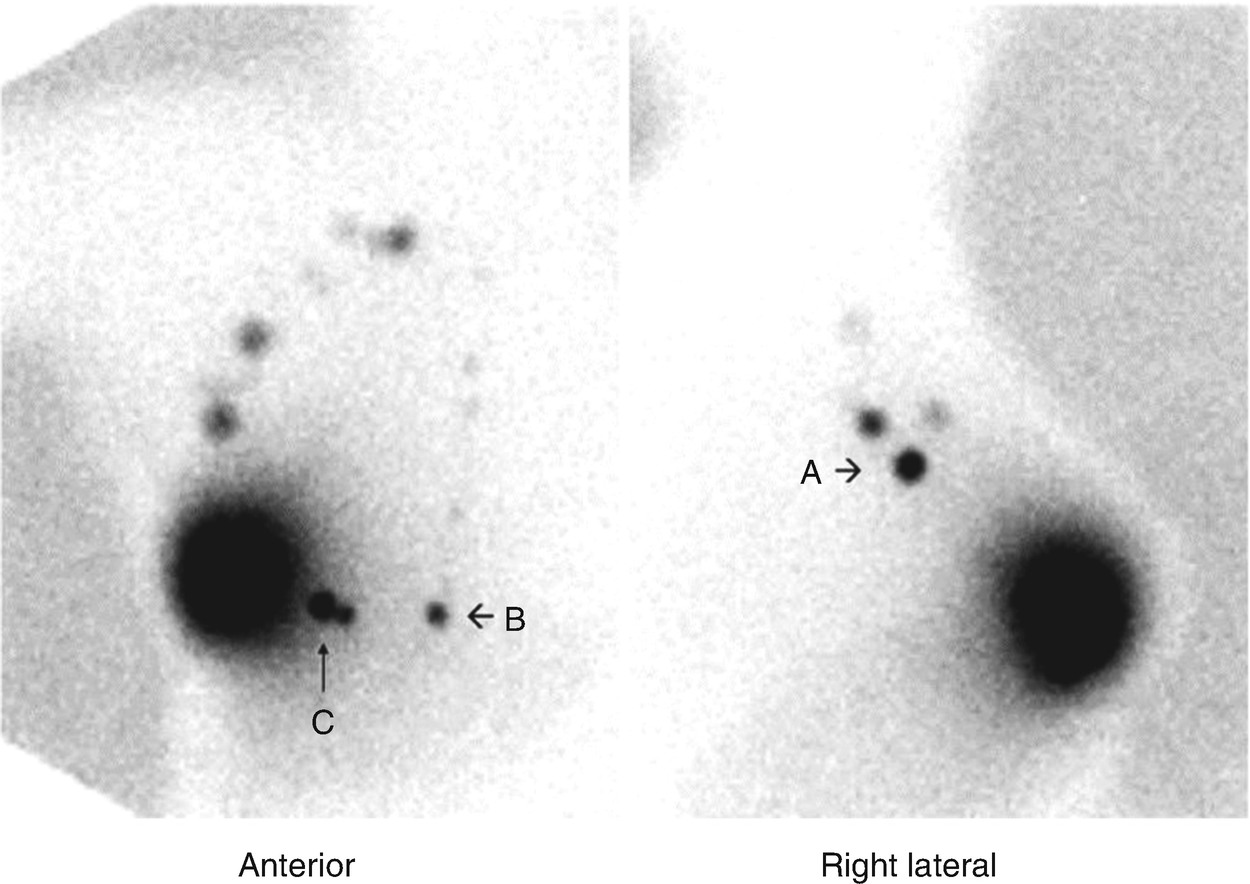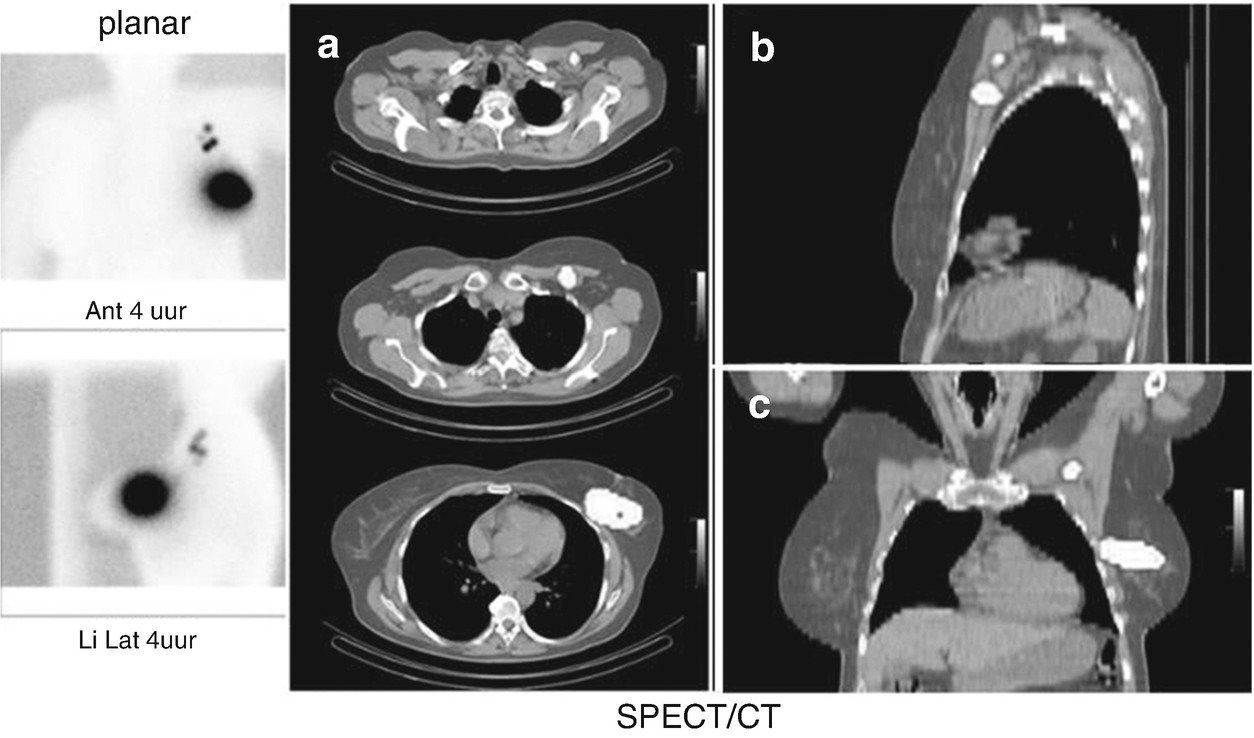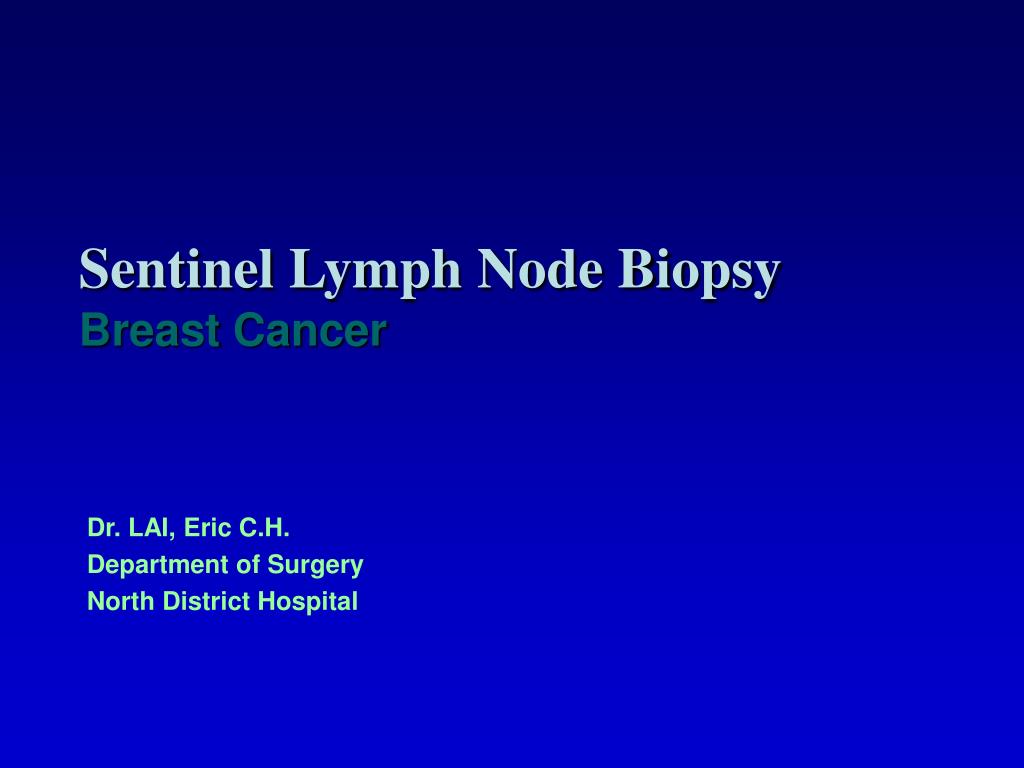


This includes patients who have undergone immediate reconstruction, but proper planning is needed to minimize potential risks. Patients with a positive SLN can safely undergo completion axillary lymph node dissections. Results appear acceptable using a variety of techniques. 'Sentinel' means to guard or stand watch, so sentinel lymph nodes are the first ones a cancer is expected to be found in if it has spread (metastasized). Mastectomy and concomitant SLNB is a safe option for well-selected breast cancer patients. A sentinel node biopsy is a surgical procedure used to look at a sample of tissue from your lymph nodes to see if an early-stage breast cancer has spread beyond the initial tumor. Although techniques vary greatly among surgeons, the majority believe that a subsequent ALND procedure does not carry additional risk of morbidity. Ten patients underwent axillary lymph node dissection as a second procedure an average of 15.4 +/- 6 nodes were cleared, and there were no complications. The SLN was positive in 14 patients (27%).

The SLN was identified in 98% of patients, and an average of 2.4 SLNs/patient were removed. In addition, a survey was sent to surgical oncologists who routinely perform SLNB in conjunction with mastectomy. Neither were differences in survival between groups.Although sentinel lymph node biopsy (SNLB) has become a standard ancillary to breast conservation, there remains a hesitancy to perform SLNB concomitant with mastectomy primarily because of concerns regarding reoperation for a positive SLN.Ī retrospective review of 51 patients who underwent SLN biopsy concomitantly with mastectomy for invasive breast cancer was performed. Cox regression analysis for disease recurrence did not show significant differences in axillary, lymph-node, or locoregional recurrence rates or distant relapse. Sometimes the sentinel node is in another part of the body for. Usually the sentinel node is in the armpit (axilla). Although some women may have one sentinel node, some may have two or three sentinel nodes. The accuracy of SLNB in invasive lobular carcinoma (ILC), the second most common type of breast cancer, has not been evaluated. What is the sentinel node The sentinel node is the first lymph node to which breast cancer cells may spread outside the breast. Patients were closely followed-up to the end of the study.Ĭlinico-pathological variables were strikingly different between study groups, with the liberal group showing a higher risk profile. e12604 Background: The safety of the sentinel lymph node biopsy procedure (SLNB) in the surgical management of breast cancer relies upon a false negative rate (FNR) being less than 10. Cases were divided into two study groups: the “strict” SNB group (unifocal tumors up to 35 mm in whom ALND was always performed for a positive SN, amounting to 1183 SNBs), and the “liberal” SNB group (extended tumor size up to selected T3 cases, as well as multifocal or bilateral disease, and patients with previous contralateral BC, not always followed by ALND after a positive SN, amounting to 451 SNBs). There were 1,587 patients and 1,634 SNB procedures. We studied consecutive BC patients undergoing SNB between January 1, 2000, and March 31, 2020. We aimed to ascertain whether a strict versus a more liberal use of SNB resulted in different clinical outcomes in our clinical experience. As applied to early Breast Cancer (BC) patients, Sentinel-node Biopsy (SNB) has undergone major changes over the years, especially concerning the widening of indication criteria or skipping systematic axillary lymph node dissection (ALND) after a positive SN.


 0 kommentar(er)
0 kommentar(er)
